Theology of History
 |
 |
 |
 |
 |
 |
 |
St. Louis de Montfort: Doctor, Prophet
& Apostle for Today’s Crisis
If someone were to ask me to name an apostle who would be a model of an apostle for our times, I would respond without hesitation by saying the name of a missionary who died precisely 239 years ago! And, in giving this perplexing response, I would have the sensation of doing something perfectly natural. For certain men, placed in the prophetic line, are above temporal circumstances.
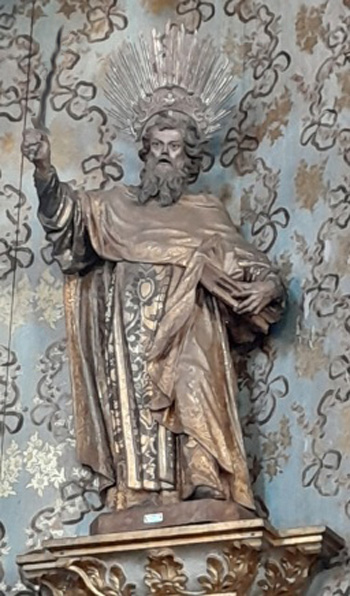 Let us take as an example Elias. In one hundred years, we who live today will have been superseded by others in the march of time, just as the men of a hundred years ago are obsolete today. We will be antiquated, anachronistic, outmoded. Two or three hundred years from now, we will be more or less encrusted in the kingdom of death, the shadows and History, like the Egyptian mummies awaiting Judgment Day in the rooms of the British Museum. And what about our “situation” a thousand years from now?
Let us take as an example Elias. In one hundred years, we who live today will have been superseded by others in the march of time, just as the men of a hundred years ago are obsolete today. We will be antiquated, anachronistic, outmoded. Two or three hundred years from now, we will be more or less encrusted in the kingdom of death, the shadows and History, like the Egyptian mummies awaiting Judgment Day in the rooms of the British Museum. And what about our “situation” a thousand years from now?
But there is someone who is alive, in fact, very alive, and who will have the last word of the modern apostle – not today, but at the end of the world when we are immersed in an almost total anachronism. He was someone that lived long before the Emperor Dom Pedro II, Pius IX and Napoleon III. One who came before St. Louis, Charlemagne and Atila the Hun, and even before Caesar Augustus and Jesus Christ. He is the Prophet Elias!
Indeed, he is a modern apostle - and even very modern – not just because it is written of him that he will participate in the spirit and tendencies of the men who will live in those future times, but because he will be sent by God as the man ideally suited to frontally combat the corruption of that century upon his return to this Earth. Elias will be modern not because he adopts the spirit and way of being of those who live in the last years of History, but rather because he will be adapted to and suited for the time.
Adapted, in the sense that he will be of a mind to do good in it. Suited, in the sense that he will have the appropriate means to correct it. And, for this very reason, he will be very modern. Because being modern does not necessarily mean to be similar to the times, and often it can even be the opposite. For an apostle, to be modern is to have conditions to do good in the century in which he lives...
Without equating him to Elias, a Prophet charged with an official mission, a certain analogy exists between him and St. Louis Marie Grignion de Montfort, whose writings contain impressive prophetic lights, although of a merely private value. It is in terms of this analogy that the French Saint is a model of an apostle for our days and the centuries to come.
A life of zealous preaching
St. Louis Marie Grignion de Montfort was born in Montfort-la-Canne, France, on January 31, 1678. From a poor family, he lacked the means necessary to study for the priesthood, to which he aspired from an early age. He went to Paris, where he took the job of guarding the cemetery in the Parish of Saint-Sulpice on certain nights of the week in order to pay for his fees at the Seminary. After a brilliant course of studies, he was ordained a priest in 1700.
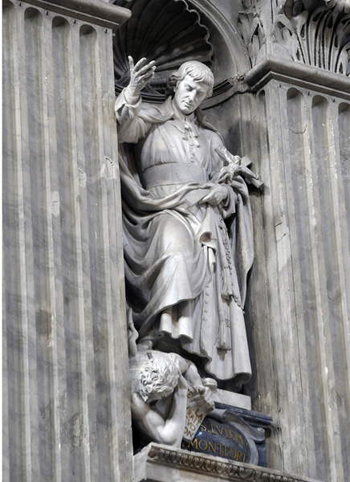 In face of the magnitude of the difficulties his apostolate suffered in France and, driven by the desire to announce the Gospel to the pagans, St. Louis Marie went to Rome to ask direction from Pope Clement XI. The Pope ordered him to return to his homeland and dedicate himself to preaching to the Catholic people who had need of catechesis and edification.
In face of the magnitude of the difficulties his apostolate suffered in France and, driven by the desire to announce the Gospel to the pagans, St. Louis Marie went to Rome to ask direction from Pope Clement XI. The Pope ordered him to return to his homeland and dedicate himself to preaching to the Catholic people who had need of catechesis and edification.
Dedicating himself entirely to this activity for the next 10 years of his life, the Saint preached, insisting on the renunciation of sensuality and worldliness, the love of mortification and the Cross, and a filial devotion to Our Lady. As a member of the Third Order of St. Dominic, he spread the Rosary far and wide.
The victim of furious attacks by Calvinists and Jansenists, St. Louis also had to endure severe measures placed on him by not a few French Bishops, who did not want him as a missionary in their dioceses.
Death came to him at only 43 years of age.
He founded two Religious Congregations, the Company of Mary and the Daughters of Wisdom.
Among his writings, the Treatise on True Devotion to the Blessed Virgin stands out as one of the highest works of Mariology of all time, and perhaps the highest. He left this admirable book in manuscript form, but it mysteriously disappeared after his death, reappearing in a providential way in our times.
Leo XIII beatified him in 1888. Pius XII, gloriously reigning, inscribed him in the catalog of Saints.
This is a "bird’s eye view" of the life of this great Saint.
A great richness comes to light on a closer examination of the main aspects of this life.
A love for pleasure & antipathy for the Church
The Renaissance unleashed in Europe a thirst for entertainment, opulence and sensual pleasures, which strongly impelled the people of that time to underestimate the things of Heaven and be much more concerned about the things of this Earth. Hence, in the 15th and 16th centuries, there was a noticeable decline in the influence of Religion on the mentality of individuals and societies.
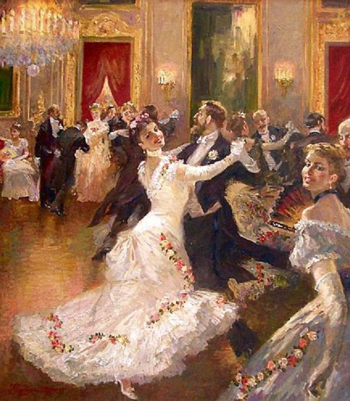
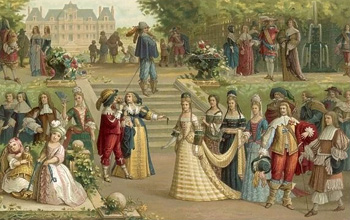 To this nascent Indifferentism, an antipathy toward the Church was often added, discreet and barely noticeable in some, more pronounced in others, and taken to the extreme of militant hostility in yet others. This state of mind significantly contributed to the outbreak of Protestantism, as well as to manifestations of Rationalism and Skepticism so frequent among the humanists. Free thinking was naturally born from Indifferentism.
To this nascent Indifferentism, an antipathy toward the Church was often added, discreet and barely noticeable in some, more pronounced in others, and taken to the extreme of militant hostility in yet others. This state of mind significantly contributed to the outbreak of Protestantism, as well as to manifestations of Rationalism and Skepticism so frequent among the humanists. Free thinking was naturally born from Indifferentism.
But these revolutionary ferments did not immediately attack the whole society. Initially, they touched only certain highly influential elements of high influence in academia, the nobility and the clergy, who were supported by only a certain number of sovereigns. Little by little, however, they reached the deepest tissues of the social body.
At the time of St. Louis Grignion (late 17th century), this influence had become noticeable in all fields: Politics had become secularized, the old organic Christian society had been half-swallowed by the Absolutism of the neo-Caesarean and neo-pagan State; the influence of Religion had consequently diminished in the lives of all the social classes, and especially the elites. A general tendency was growing toward looser, “freer” and easier customs in all milieus, the thirst for pleasure and profit increased, worldliness prevailed even in a certain number of religious houses, Mercantilism extended its tentacles to dominate all of existence.
In general terms, the picture was very similar to that of our days.
Considerable differences from our times
However, while an analogy can be profound, evident and indisputable, it would be impossible to pass on an absolute comparison of the two times. The body upon which these ferments acted in the 15th, 16th and even 17th centuries was still the robust body of the old Christianity generated by the Middle Ages. A countless number of institutions, mental habits, traditions, customs and laws still reflected the spirit of the organic and Christian society of the past.
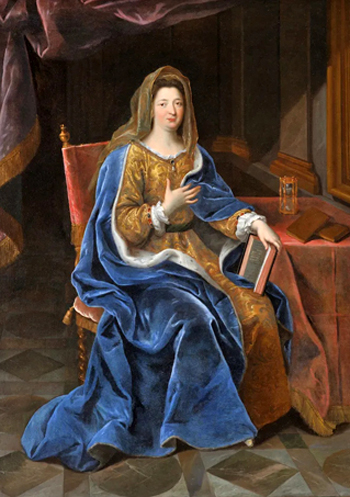 Although the absolute monarchy presaged today’s Socialism, it was nevertheless still personified then in the Kings who reigned by the grace of God, who still considered themselves Fathers of their people in the good old style of St. Louis IX. If international life had been secularized by the Treaties of Westphalia, there were still certain vestiges of Christianity, a family of Kings and Catholic peoples gifted with the consciousness of forming a separate whole to confront the pagan world.
Although the absolute monarchy presaged today’s Socialism, it was nevertheless still personified then in the Kings who reigned by the grace of God, who still considered themselves Fathers of their people in the good old style of St. Louis IX. If international life had been secularized by the Treaties of Westphalia, there were still certain vestiges of Christianity, a family of Kings and Catholic peoples gifted with the consciousness of forming a separate whole to confront the pagan world.
If society was worldly, religious disputes – such as those between the Jesuits and Jansenists – found a resonance then that they would never have in our days. If customs were lax at court and in the cities, there were numerous and resounding exceptions to this. On the throne itself, the scandalous life of King Louis XIV, for example, was in some way repaired by his amendment and model life after the fall of Mlle. de La Vallière and his marriage to Madame Françoise de Maintenon, which took place due to the exemplary penance made for him in Carmel. In her turn, Mme. de Montespan died a Catholic.
The Duke of Burgundy, the grandson of Louis XIV, stood out for his piety, and the Royal Family would still have in the 18th century, alongside the shame of the life of Louis XV, the example of the uncommon virtues of the Dauphin Louis, as well as of the Carmelite nun Madame Louise de France and Princess Maria Clotilde of Savoy, both daughters of the King who died in odor of sanctity.
Thus, no matter how much the analogies between the 16th century and the 20th century must be, it would be a clear exaggeration to say that the political and social life of that time was entirely – or almost entirely – secularized and paganized, as it is in our days.
However, in the history of Modern Times, that is, in the 16th 17th and 18th centuries, it cannot be doubted that the ferments born of the neo-pagan Renaissance revealed themselves to be increasingly vigorous, and it was this that caused the immense explosion of 1789.
Three stages of a single Revolution
Considering these facts expressed by our Holy Father Leo XIII in his Encyclical Parvenu à la 25ème Année, the French Revolution was a consequence of Protestantism. And the French Revolution, in its turn, produced Communism.
 The egalitarianism and religious liberalism of the apostate friar of Wittenberg was followed by the egalitarianism and political-social Liberalism of the dreamers, conspirators and criminals of 1789. And the French Revolution was followed by the totalitarian, social and economic egalitarianism of Marx.
The egalitarianism and religious liberalism of the apostate friar of Wittenberg was followed by the egalitarianism and political-social Liberalism of the dreamers, conspirators and criminals of 1789. And the French Revolution was followed by the totalitarian, social and economic egalitarianism of Marx.
The Protestant Revolution was, then, an ancestral form of the French Revolution, which was likewise the predecessor of modern Communism. And each of these ancestral forms already carried within itself all of the toxins of what would follow it. They are three illnesses, successively more serious, caused by the same virus. That is, they are three successively more serious phases of the same disease. Three stages of an omnimodal and universal Revolution.
A prophet appears in the course of the Revolution
Now, St. Louis Grignion de Montfort was, in this historical process, a true prophet.
At a time when so many illustrious personages, lulled into careless, lukewarm and systematic optimism, felt no concern about the situation of the Church, he probed with an eagle’s gaze the depths of the present, and predicted a future religious crisis in words that foretell the misfortunes that the Church suffered during the Revolution.
In effect, he foresaw the implementation of State secularism, the establishment of the “Constitutional Church,” the proscription of Catholic worship, the worship of the goddess Reason, the captivity and death of Pope Pius VI, the massacres or deportations of priests and religious, the introduction of divorce, the confiscation of ecclesiastical properties, etc.
But there is something more. To our encouragement and joy, the Saint prophesied a great and universal victory for the Catholic Religion in the days to come.
Hammer of the Revolution
In addition to being a prophet, St. Louis Grignion de Montfort was a missionary and warrior. A missionary, he implacably scorched the neo-pagan spirit, doing everything he could to move the faithful away from worldliness and everything that came from the evil spirit born of the Renaissance.
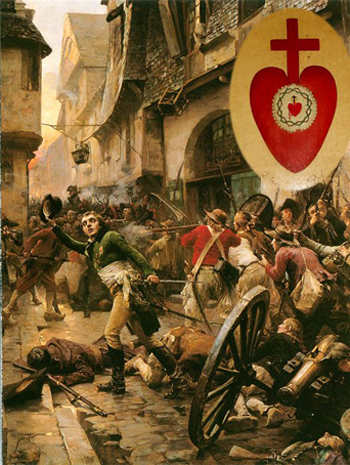 The region he evangelized was so deeply immunized against the virus of the Revolution that it rose up with arms in hand against the republican and anti-Catholic government established in Paris during the French Revolution. This glorious resistance was the Chouannerie. If St. Louis Grignion could have extended his missionary action into all of France, its history – and the history of the world – would probably have been different. Now then, why did he not evangelize France in its entirety?
The region he evangelized was so deeply immunized against the virus of the Revolution that it rose up with arms in hand against the republican and anti-Catholic government established in Paris during the French Revolution. This glorious resistance was the Chouannerie. If St. Louis Grignion could have extended his missionary action into all of France, its history – and the history of the world – would probably have been different. Now then, why did he not evangelize France in its entirety?
An extremely effective orator, he preached the word of God with extraordinary zeal and unrestraint. This earned him the hatred not only of Calvinists, but also of one of the most detestable and most influential sects that have infiltrated the Church to date, that is, the Jansenists.
It would take too long to state the multiple and complex reasons why Jansenism, with its appearances of austerity, is a natural product of the religious crisis of the 16th century. What is certain is that this sect, having a deplorable influence on many faithful laymen, priests and even Bishops, Archbishops and Cardinals, followed a line of thought and action that was harmful to the full restoration of authentic religious life, since it kept souls away from the Sacraments and vigorously fought against devotion to Our Lady.
St. Louis Grignion de Montfort, on the contrary, had a most ardent devotion for the Blessed Virgin Mary, and even composed in praise of her The Treatise on True Devotion, which constitutes today the strongest foundation of all profound Marian piety. Also, through the missions he gave, he brought the people closer to the Sacraments and encouraged them to pray the Rosary; in a word, he carried out a work diametrically opposed to the aims of the Jansenists.
This raised an open persecution against him in Catholic milieus, which caused him the greatest humiliations. It is surprising that so many Prelates, clergy and lay people, in the name of charity, were angry or apprehensive about the just severity of the Holy See toward the Jansenists. For this reason, there were no penalties, acts of hostility or humiliations against St. Louis Maria sufficient to satisfy their ire.
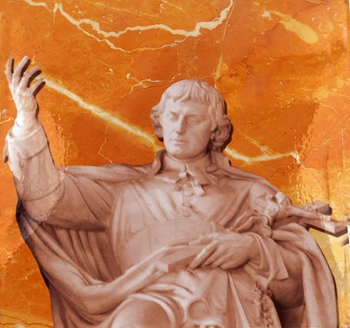 It can be said that St. Louis de Montfort was one of the most despised and humiliated Saints in the twenty centuries of the life of the Church. Finally, he was allowed to exercise his ministry in only two Dioceses – his native Brittany and the Vendée. But, this new Ignatius of Loyola, calmly facing this tidal wave against his person, those waves of anti-Catholic hatred disguised by an air of piety, was not disturbed. And, humiliated to the end, he fought to the end.
It can be said that St. Louis de Montfort was one of the most despised and humiliated Saints in the twenty centuries of the life of the Church. Finally, he was allowed to exercise his ministry in only two Dioceses – his native Brittany and the Vendée. But, this new Ignatius of Loyola, calmly facing this tidal wave against his person, those waves of anti-Catholic hatred disguised by an air of piety, was not disturbed. And, humiliated to the end, he fought to the end.
Now, this extraordinary Saint left an admirable prayer, containing special teachings and insights for our time. It is the one he composed crying out for Missionaries for his Congregation. In these times it is useful for us to remember the angelic figure of this supreme champion of the Virgin.
In this Fiery Prayer, it becomes clear that the time of St. Louis Marie was a precursor to an immense crisis that continues to this day, and will continue until the establishment of the Reign of Mary. And he himself appears to us as the model, the prefigure of the Apostles who will be raised up to fight in this crisis and win the battle for Mary Most Holy.
This is the sublime and profound relevance of St. Louis Marie Grignion de Montfort for the apostles of our days.


Elias, an Apostle to lead the Apostles of the Latter Days
But there is someone who is alive, in fact, very alive, and who will have the last word of the modern apostle – not today, but at the end of the world when we are immersed in an almost total anachronism. He was someone that lived long before the Emperor Dom Pedro II, Pius IX and Napoleon III. One who came before St. Louis, Charlemagne and Atila the Hun, and even before Caesar Augustus and Jesus Christ. He is the Prophet Elias!
Indeed, he is a modern apostle - and even very modern – not just because it is written of him that he will participate in the spirit and tendencies of the men who will live in those future times, but because he will be sent by God as the man ideally suited to frontally combat the corruption of that century upon his return to this Earth. Elias will be modern not because he adopts the spirit and way of being of those who live in the last years of History, but rather because he will be adapted to and suited for the time.
Adapted, in the sense that he will be of a mind to do good in it. Suited, in the sense that he will have the appropriate means to correct it. And, for this very reason, he will be very modern. Because being modern does not necessarily mean to be similar to the times, and often it can even be the opposite. For an apostle, to be modern is to have conditions to do good in the century in which he lives...
Without equating him to Elias, a Prophet charged with an official mission, a certain analogy exists between him and St. Louis Marie Grignion de Montfort, whose writings contain impressive prophetic lights, although of a merely private value. It is in terms of this analogy that the French Saint is a model of an apostle for our days and the centuries to come.
A life of zealous preaching
St. Louis Marie Grignion de Montfort was born in Montfort-la-Canne, France, on January 31, 1678. From a poor family, he lacked the means necessary to study for the priesthood, to which he aspired from an early age. He went to Paris, where he took the job of guarding the cemetery in the Parish of Saint-Sulpice on certain nights of the week in order to pay for his fees at the Seminary. After a brilliant course of studies, he was ordained a priest in 1700.

Another prophet who continued the mission of Elias
Dedicating himself entirely to this activity for the next 10 years of his life, the Saint preached, insisting on the renunciation of sensuality and worldliness, the love of mortification and the Cross, and a filial devotion to Our Lady. As a member of the Third Order of St. Dominic, he spread the Rosary far and wide.
The victim of furious attacks by Calvinists and Jansenists, St. Louis also had to endure severe measures placed on him by not a few French Bishops, who did not want him as a missionary in their dioceses.
Death came to him at only 43 years of age.
He founded two Religious Congregations, the Company of Mary and the Daughters of Wisdom.
Among his writings, the Treatise on True Devotion to the Blessed Virgin stands out as one of the highest works of Mariology of all time, and perhaps the highest. He left this admirable book in manuscript form, but it mysteriously disappeared after his death, reappearing in a providential way in our times.
Leo XIII beatified him in 1888. Pius XII, gloriously reigning, inscribed him in the catalog of Saints.
This is a "bird’s eye view" of the life of this great Saint.
A great richness comes to light on a closer examination of the main aspects of this life.
A love for pleasure & antipathy for the Church
The Renaissance unleashed in Europe a thirst for entertainment, opulence and sensual pleasures, which strongly impelled the people of that time to underestimate the things of Heaven and be much more concerned about the things of this Earth. Hence, in the 15th and 16th centuries, there was a noticeable decline in the influence of Religion on the mentality of individuals and societies.

A love for pleasure grew after the Renaissance, above, but there were still good customs & piety in the nobility, below

But these revolutionary ferments did not immediately attack the whole society. Initially, they touched only certain highly influential elements of high influence in academia, the nobility and the clergy, who were supported by only a certain number of sovereigns. Little by little, however, they reached the deepest tissues of the social body.
At the time of St. Louis Grignion (late 17th century), this influence had become noticeable in all fields: Politics had become secularized, the old organic Christian society had been half-swallowed by the Absolutism of the neo-Caesarean and neo-pagan State; the influence of Religion had consequently diminished in the lives of all the social classes, and especially the elites. A general tendency was growing toward looser, “freer” and easier customs in all milieus, the thirst for pleasure and profit increased, worldliness prevailed even in a certain number of religious houses, Mercantilism extended its tentacles to dominate all of existence.
In general terms, the picture was very similar to that of our days.
Considerable differences from our times
However, while an analogy can be profound, evident and indisputable, it would be impossible to pass on an absolute comparison of the two times. The body upon which these ferments acted in the 15th, 16th and even 17th centuries was still the robust body of the old Christianity generated by the Middle Ages. A countless number of institutions, mental habits, traditions, customs and laws still reflected the spirit of the organic and Christian society of the past.

The pious Madame de Maintenon secretly married King Louis XIV & helped him to die well
If society was worldly, religious disputes – such as those between the Jesuits and Jansenists – found a resonance then that they would never have in our days. If customs were lax at court and in the cities, there were numerous and resounding exceptions to this. On the throne itself, the scandalous life of King Louis XIV, for example, was in some way repaired by his amendment and model life after the fall of Mlle. de La Vallière and his marriage to Madame Françoise de Maintenon, which took place due to the exemplary penance made for him in Carmel. In her turn, Mme. de Montespan died a Catholic.
The Duke of Burgundy, the grandson of Louis XIV, stood out for his piety, and the Royal Family would still have in the 18th century, alongside the shame of the life of Louis XV, the example of the uncommon virtues of the Dauphin Louis, as well as of the Carmelite nun Madame Louise de France and Princess Maria Clotilde of Savoy, both daughters of the King who died in odor of sanctity.
Thus, no matter how much the analogies between the 16th century and the 20th century must be, it would be a clear exaggeration to say that the political and social life of that time was entirely – or almost entirely – secularized and paganized, as it is in our days.
However, in the history of Modern Times, that is, in the 16th 17th and 18th centuries, it cannot be doubted that the ferments born of the neo-pagan Renaissance revealed themselves to be increasingly vigorous, and it was this that caused the immense explosion of 1789.
Three stages of a single Revolution
Considering these facts expressed by our Holy Father Leo XIII in his Encyclical Parvenu à la 25ème Année, the French Revolution was a consequence of Protestantism. And the French Revolution, in its turn, produced Communism.

Communism: the next step resulting from the French & Protestant Revolutions
The Protestant Revolution was, then, an ancestral form of the French Revolution, which was likewise the predecessor of modern Communism. And each of these ancestral forms already carried within itself all of the toxins of what would follow it. They are three illnesses, successively more serious, caused by the same virus. That is, they are three successively more serious phases of the same disease. Three stages of an omnimodal and universal Revolution.
A prophet appears in the course of the Revolution
Now, St. Louis Grignion de Montfort was, in this historical process, a true prophet.
At a time when so many illustrious personages, lulled into careless, lukewarm and systematic optimism, felt no concern about the situation of the Church, he probed with an eagle’s gaze the depths of the present, and predicted a future religious crisis in words that foretell the misfortunes that the Church suffered during the Revolution.
In effect, he foresaw the implementation of State secularism, the establishment of the “Constitutional Church,” the proscription of Catholic worship, the worship of the goddess Reason, the captivity and death of Pope Pius VI, the massacres or deportations of priests and religious, the introduction of divorce, the confiscation of ecclesiastical properties, etc.
But there is something more. To our encouragement and joy, the Saint prophesied a great and universal victory for the Catholic Religion in the days to come.
Hammer of the Revolution
In addition to being a prophet, St. Louis Grignion de Montfort was a missionary and warrior. A missionary, he implacably scorched the neo-pagan spirit, doing everything he could to move the faithful away from worldliness and everything that came from the evil spirit born of the Renaissance.

The region where St. Louis preached remained faithful in the French Revolution
An extremely effective orator, he preached the word of God with extraordinary zeal and unrestraint. This earned him the hatred not only of Calvinists, but also of one of the most detestable and most influential sects that have infiltrated the Church to date, that is, the Jansenists.
It would take too long to state the multiple and complex reasons why Jansenism, with its appearances of austerity, is a natural product of the religious crisis of the 16th century. What is certain is that this sect, having a deplorable influence on many faithful laymen, priests and even Bishops, Archbishops and Cardinals, followed a line of thought and action that was harmful to the full restoration of authentic religious life, since it kept souls away from the Sacraments and vigorously fought against devotion to Our Lady.
St. Louis Grignion de Montfort, on the contrary, had a most ardent devotion for the Blessed Virgin Mary, and even composed in praise of her The Treatise on True Devotion, which constitutes today the strongest foundation of all profound Marian piety. Also, through the missions he gave, he brought the people closer to the Sacraments and encouraged them to pray the Rosary; in a word, he carried out a work diametrically opposed to the aims of the Jansenists.
This raised an open persecution against him in Catholic milieus, which caused him the greatest humiliations. It is surprising that so many Prelates, clergy and lay people, in the name of charity, were angry or apprehensive about the just severity of the Holy See toward the Jansenists. For this reason, there were no penalties, acts of hostility or humiliations against St. Louis Maria sufficient to satisfy their ire.

His Fire Prayer is a call for the Apostles of the Latter Times
Now, this extraordinary Saint left an admirable prayer, containing special teachings and insights for our time. It is the one he composed crying out for Missionaries for his Congregation. In these times it is useful for us to remember the angelic figure of this supreme champion of the Virgin.
In this Fiery Prayer, it becomes clear that the time of St. Louis Marie was a precursor to an immense crisis that continues to this day, and will continue until the establishment of the Reign of Mary. And he himself appears to us as the model, the prefigure of the Apostles who will be raised up to fight in this crisis and win the battle for Mary Most Holy.
This is the sublime and profound relevance of St. Louis Marie Grignion de Montfort for the apostles of our days.

From Catolicismo, No 53, May 1995
Posted July 19, 2024
Posted July 19, 2024
______________________
______________________
 Volume I |
 Volume II |
 Volume III |
 Volume IV |
 Volume V |
 Volume VI |
 Volume VII |
 Volume VIII |
 Volume IX |
 Volume X |
 Volume XI |
 Special Edition |


